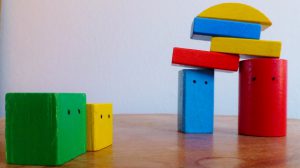One of the best ways to engage your young child with an Autism Spectrum Disorder(ASD) is through play. Play experiences provide the opportunity for your child to explore sensory experiences, learn turn taking and sharing skills and interacting with other adults and children. It is quite common for young children with ASD to have a limited concept of play and they may choose to focus on only a few toys which they may become fixated on or they may play with in a repetitive way.

As a parent of a young child with ASD you can help your child develop the essential social and communication skills needed for play by providing structured play activities. It is also necessary to allow you child to have free play time so they can learn to occupy themselves or play with another child without the presence of an adult. There are many types of play that will lead to future leisure opportunities as your child grows and develops.
Let’s have a look at how structured play can be put into place in your home. Structured play works by the adult providing clear guidelines as to what is going to happen, how it will happen and when. Because structured play has a clear start and endpoint it reduces the number of options available to your child and therefore there is a lessened possibility of an anxious or stressful situation arising.
To implement structured play in your home you need to choose an activity that you already have eg. jigsaws, puzzle books, matching games. All these activities have a clear beginning and ending. Some things to think about and help you to organise structured play:
- Focus on your child’s interest- eg. Thomas the Tank Engine, start by using Thomas-themed jigsaws, puzzles or colouring books
- Focus on your child’s area strength- if your child is attracted to colour use the sorting of coloured blocks, lego, balls
- Limit your talking to short instructions eg. block, blue block
- Keep the structured play short, this will keep your child’s interest and focus
- Start with activities that your child can already do- this will ensure success
- Diffuse any inappropriate play- eg. if your child is throwing blocks, demonstrate stacking them, or stop the activity and start an appropriate throwing activity with a ball
- And the most important step is to have fun with your child!
During these play sessions you need to be a keen observer of your child and measure his/her ability for you to move away from the play, add a new activity and for your child to still remain engaged. When this occurs they have moved into the beginning of free play and the next step is for them to seek out other toys that have not been readily supplied by you.